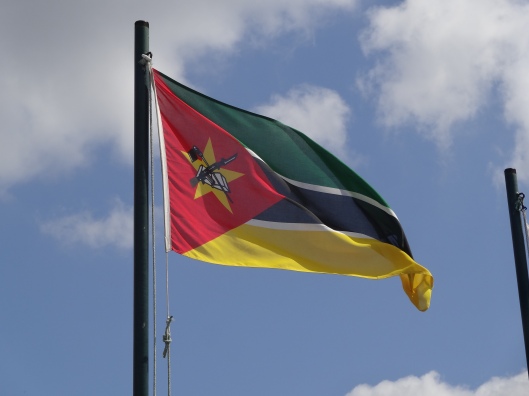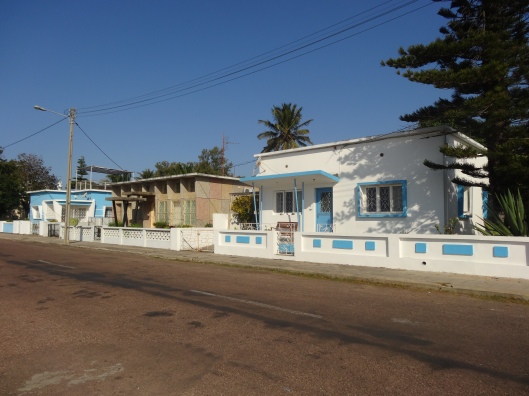I posted my first blog about my Mozambique trip a week or so ago, covering a bit about the country and my time exploring the amazing beaches. See here. The second half of the holiday we explored the local beach town, Inhambane and the capital, Maputo.
Inhambane is around 20km from Barra Beach. Becks and I decided to try out the local public transport to get there. Mozambique, like Uganda, has minibus taxis as it's main form of public transport (known as Chappas in Mozambique or Matatus in Uganda). I've taken them several times in Uganda, they are super cheap, but are always a bit over-crowded. The ones in Mozambique, however, took the word "over-crowded" to a whole new level. At one point I counted 32 people on board the 14-seater mini-bus:
 |
| View from the back of the bus... |
Now, as most business and trade has headed south to Maputo, the town is a little run down. However it was still a really nice place to spend a day wandering around, with some brilliant art deco architecture. We also happened to be there during a weekend long cultural festival.
Here are some pics of Inhambane:
.JPG) |
| Cathedral of Nossa Senhora de Comceicao, dating from the 18th century. |
Another popular form of local transport in Mozambique was the tuk-tuk:
.JPG) |
| Statue of Samora Machel, the first president after independence |
.JPG) |
| One of the town's mosques |
We flew from Inhambane to Maputo. Inhambane airport was probably one of the best airports I've ever been to:
.JPG) |
| Inhambane airport |
 |
| The airport lounge.... |
.JPG) |
| The airport bar and restaurant (stocking a selection of local beers and not much else!) |
Maputo sits on the south eastern corner of the Mozambique coast and is Mozambique's capital and largest city. During the Portuguese rule, it was known as Lourenco Marques or "LM". At independence, Samora Machal, renamed it to Maputo, honouring an early chief who had resisted Portuguese colonisation.
We arrived late afternoon to monsoon-type rain (which the infrastructure didn't seem able to cope with; many roads were flooded) but then spent the following day exploring the city in the sunshine:
The main cathedral was in the Praca de Independencia:
As was a statue of Samora Machal:
 |
 |
The Municipal market |
 |
| Inside the market |
 |
.JPG) |
 |
| Me waiting for my lunch. |
.JPG) |
| Lunch (course one!) |
We also visited the Nucleo de Arte, an arts collective, and saw one of the artists at work.
 |
| The Maputo coastline |
 |
| In a tuk tuk! |
In the evening we headed to a little, newly opened venue called Mafalala Libre for some live music:
 |
The following day we headed back to Johannesburg on a luxury coach (which was surprisingly luxurious!) traveling along the side of the Krueger National Park (we were convinced we saw some rhinos out of the window at one point...) and seeing some of the South African countryside. I then enjoyed a dinner of roast lamb (my first since arriving in Africa) and some shopping (I was quite excited by the outlets of the body shop and accessorize in SA, as well as being able to buy hot cross buns in the supermarket!) before heading back to Kampala the following day.
Mozambique is a beautiful and brilliant country and there seems to be a lot of development happening -I would definitely recommend it to anyone!

.JPG)
.JPG)
.JPG)
.JPG)
.JPG)

.JPG)
.JPG)
.JPG)
.JPG)
.JPG)
.JPG)
No comments:
Post a Comment